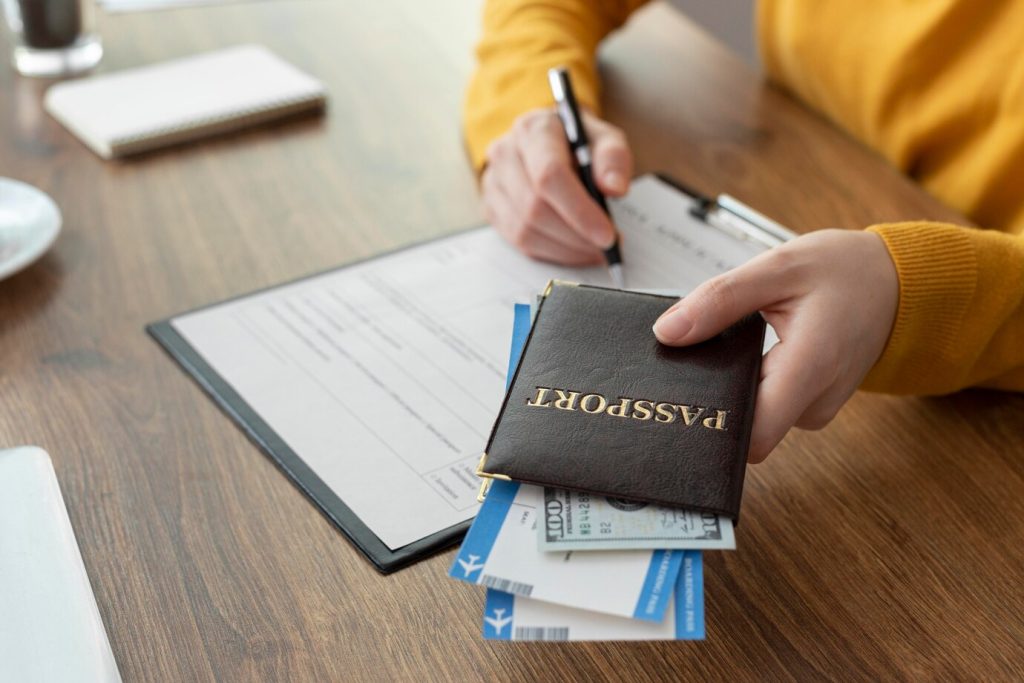Visa Cost in the USA

Everyone who is applying or planning to apply for a visa wants to know the cost of a U.S. visa.
If you browse an average website, you will find visa prices that usually include consular fees, but few can provide the full cost of a visa with all additional fees.
Here, we will try to outline not only the cost of a U.S. visa in the context of the consular fee but also reveal information about other fees that are often not mentioned, so you can calculate everything and prepare for the real expenses.
What is MVR and how is it used
Let’s start with the fact that when applying to a visa center, a non-refundable consular fee, known as MVR, is always charged. This consular fee, also called the “machine-readable visa fee,” essentially covers the cost of processing the applicant’s request, the interview, and the issuance of the visa itself.
When an applicant pays the MVR, they should know not only which visa they are applying for but also ensure the accuracy of all payment details, as the fee is non-refundable even if payment errors occur.
Although all consulate websites list prices in U.S. dollars, payments are actually made in local currency, converted to the dollar amount on the day of payment. So, in practice, we always pay in the national currencies of the countries where we apply, and to avoid hidden fees, it’s important to pay through the bank designated by the consulate according to their instructions. You can read more about this in the article on paying consular fees at the bank.
Having made a small remark, we will return to the standard terminology and clarify that MVR is our visa, or consular, fee. After completing the documents, we must make the payment to the visa center’s account, and only then will the application process begin.
Below, we have compiled a list of visas and the corresponding cost of the MVR (visa/consular fee).
| Visa Category | Description | Fee, USD |
| B | Business and tourism visas | $ 160 |
| C-1 | Transit visa | $ 160 |
| D | Visas for crewmembers of marine and air vessels | $ 160 |
| E | Visas for international traders and investors, as well as for Australian professionals | $ 205 |
| F* | Student Visas (academic studies) | $ 160 |
| H | Visas for temporary (seasonal) workers and trainees | $ 190 |
| I | Visas for journalists and media workers | $ 160 |
| J* | Visas for exchange program participants | $ 160 |
| K | Visas for fiancés and spouses of U.S. citizens | $ 265 |
| L | Visas for employees working in a division, head office, branch, or subsidiary of the same company in the U.S. in managerial or executive roles, or as a specialist | $ 190 |
| M* | Student Visas (vocational training) | $ 160 |
| O | Visas for individuals with extraordinary abilities | $ 190 |
| P | Visas for athletes and cultural workers | $ 190 |
| Q | Visas for participants in international cultural exchange programs | $ 190 |
| R | Visas for religious workers | $ 190 |
| T | Visas for victims of human trafficking | $ 160 |
| U | Visas for victims of criminal activity | $ 160 |
| TN/TD | Visas for professional workers from NAFTA countries | $ 160 |
- SEVIS Fee – a fee for entering student data into the registry.
SEVIS Fee
The SEVIS Fee is a charge applied to visas in categories F, J, M, as well as to all family members accompanying the visa holder, from the moment of receiving the documents until the student is dismissed for any reason (or until the end of studies).
This fee also covers the cost of filling out and reviewing the I-20 or DS-2019 form, which essentially serve as the supporting documents that allow living and studying in the United States for the entire period of study.
The fee amounts for these visa categories are:
- $350 for those applying for F/M student visas
- $220 for those applying for J visa (exchange program)
Thus, the total cost of the visa is:
- F/M – $160 + $350 = $510
- J – $160 + $220 = $380
L visa fraud prevention and detection fee
For those applying for an L visa, there is also an additional fee called the “L visa fraud prevention and detection fee.” This fee entails additional fraud checks on the main applicant only (others applying for L-2, L-3 visas do not pay this fee).
Thus, the total cost of the L-1 visa is:
- $190 + $500 = $690
The Consolidated Appropriations Act of 2016
There is also an interesting fee called “The Consolidated Appropriations Act of 2016,” which applies to L-1 visa holders who employ 50 or more people (where 50% of them are on H-1B or L-1 status) when submitting a consolidated application (transferring multiple employees at once).
Thus, the total cost of the L-1 visa is:
- $190 + $500 + $4500 = $5190.
Diversity Visa Lottery fee
Everyone who wins the DV Lottery must also pay their fee. The fee is charged for each family member who will move with the winner. There are two payments winners must make. The first is the fee for processing the winner’s application – $330. After the winner passes the interview and receives the visa, before they depart for the U.S., they will be asked to pay an additional $220.
Thus, the total cost of the visa is:
- DV-1 — $330 + $220 = $550.
We hope this information was helpful, and you can calculate everything and anticipate your expenses. Good luck with your interview!
Table of Contents


